Oded Nov
AI Rivalry as a Craft: How Resisting and Embracing Generative AI Reshape Writing Professions
Mar 12, 2025Abstract:Generative AI (GAI) technologies are disrupting professional writing, challenging traditional practices. Recent studies explore GAI adoption experiences of creative practitioners, but we know little about how these experiences evolve into established practices and how GAI resistance alters these practices. To address this gap, we conducted 25 semi-structured interviews with writing professionals who adopted and/or resisted GAI. Using the theoretical lens of Job Crafting, we identify four strategies professionals employ to reshape their roles. Writing professionals employed GAI resisting strategies to maximize human potential, reinforce professional identity, carve out a professional niche, and preserve credibility within their networks. In contrast, GAI-enabled strategies allowed writers who embraced GAI to enhance desirable workflows, minimize mundane tasks, and engage in new AI-managerial labor. These strategies amplified their collaborations with GAI while reducing their reliance on other people. We conclude by discussing implications of GAI practices on writers' identity and practices as well as crafting theory.
An Exploration And Validation of Visual Factors in Understanding Classification Rule Sets
Sep 19, 2021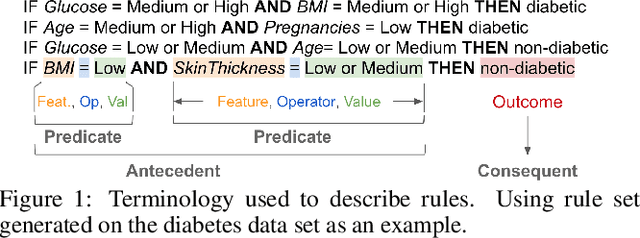
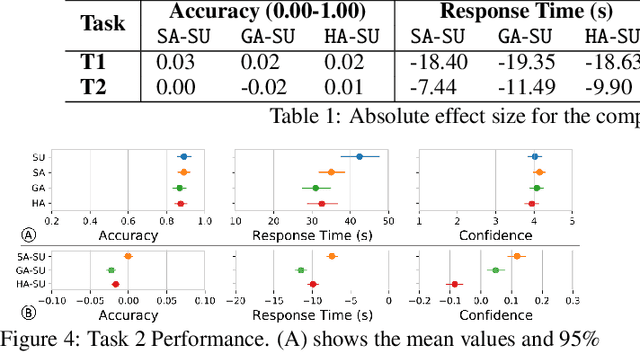
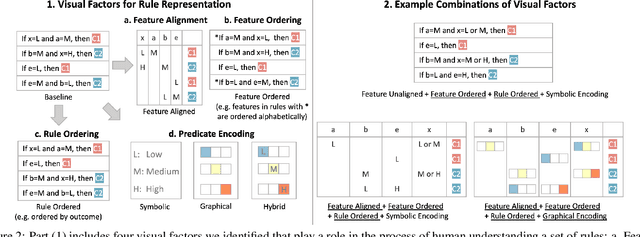

Abstract:Rule sets are often used in Machine Learning (ML) as a way to communicate the model logic in settings where transparency and intelligibility are necessary. Rule sets are typically presented as a text-based list of logical statements (rules). Surprisingly, to date there has been limited work on exploring visual alternatives for presenting rules. In this paper, we explore the idea of designing alternative representations of rules, focusing on a number of visual factors we believe have a positive impact on rule readability and understanding. We then presents a user study exploring their impact. The results show that some design factors have a strong impact on how efficiently readers can process the rules while having minimal impact on accuracy. This work can help practitioners employ more effective solutions when using rules as a communication strategy to understand ML models.
Visualizing Rule Sets: Exploration and Validation of a Design Space
Mar 04, 2021
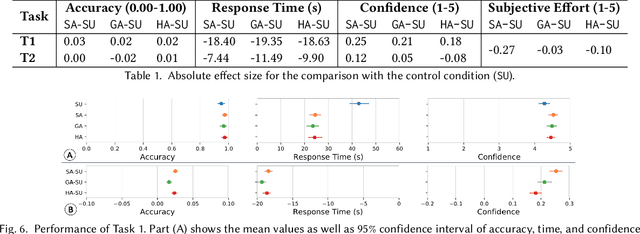
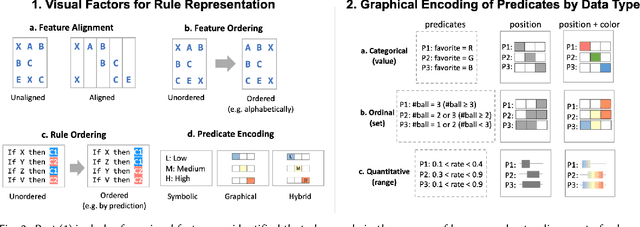

Abstract:Rule sets are often used in Machine Learning (ML) as a way to communicate the model logic in settings where transparency and intelligibility are necessary. Rule sets are typically presented as a text-based list of logical statements (rules). Surprisingly, to date there has been limited work on exploring visual alternatives for presenting rules. In this paper, we explore the idea of designing alternative representations of rules, focusing on a number of visual factors we believe have a positive impact on rule readability and understanding. The paper presents an initial design space for visualizing rule sets and a user study exploring their impact. The results show that some design factors have a strong impact on how efficiently readers can process the rules while having minimal impact on accuracy. This work can help practitioners employ more effective solutions when using rules as a communication strategy to understand ML models.
SONYC-UST-V2: An Urban Sound Tagging Dataset with Spatiotemporal Context
Sep 11, 2020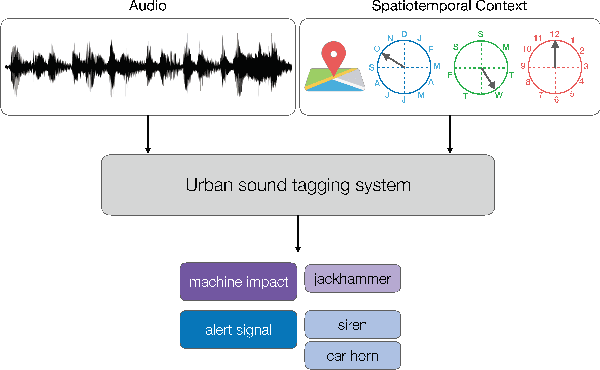
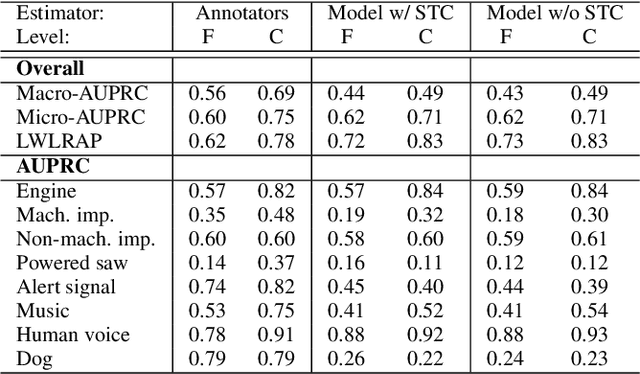
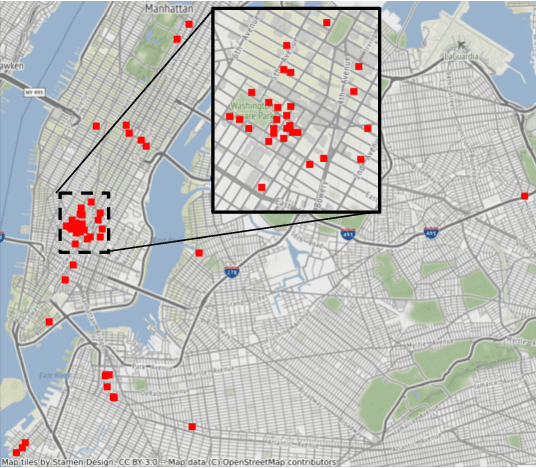
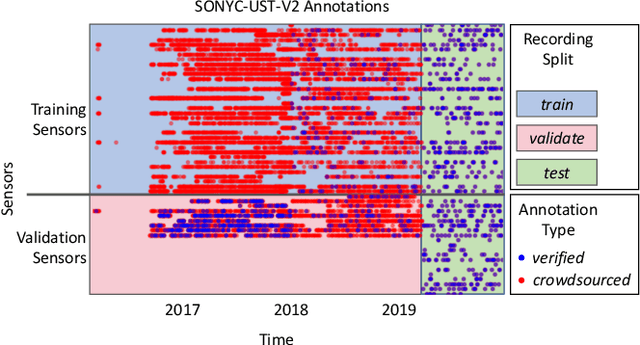
Abstract:We present SONYC-UST-V2, a dataset for urban sound tagging with spatiotemporal information. This dataset is aimed for the development and evaluation of machine listening systems for real-world urban noise monitoring. While datasets of urban recordings are available, this dataset provides the opportunity to investigate how spatiotemporal metadata can aid in the prediction of urban sound tags. SONYC-UST-V2 consists of 18510 audio recordings from the "Sounds of New York City" (SONYC) acoustic sensor network, including the timestamp of audio acquisition and location of the sensor. The dataset contains annotations by volunteers from the Zooniverse citizen science platform, as well as a two-stage verification with our team. In this article, we describe our data collection procedure and propose evaluation metrics for multilabel classification of urban sound tags. We report the results of a simple baseline model that exploits spatiotemporal information.
Evaluation of a Recommender System for Assisting Novice Game Designers
Aug 13, 2019
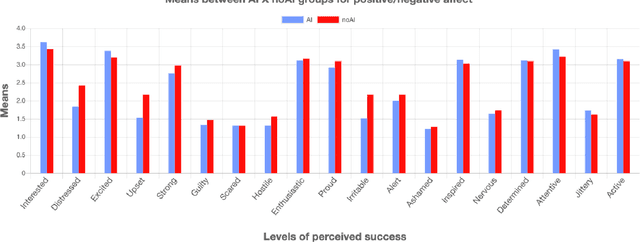
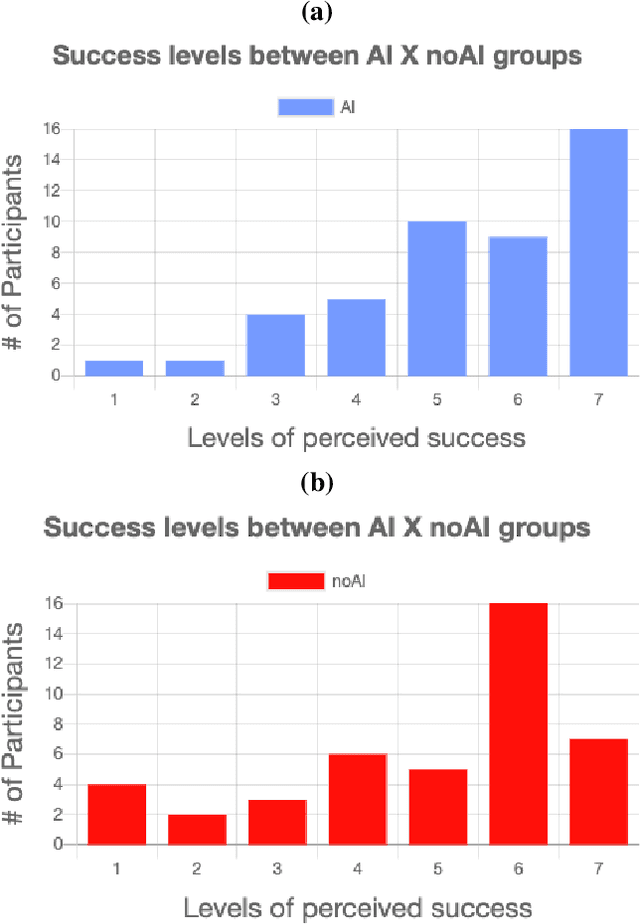
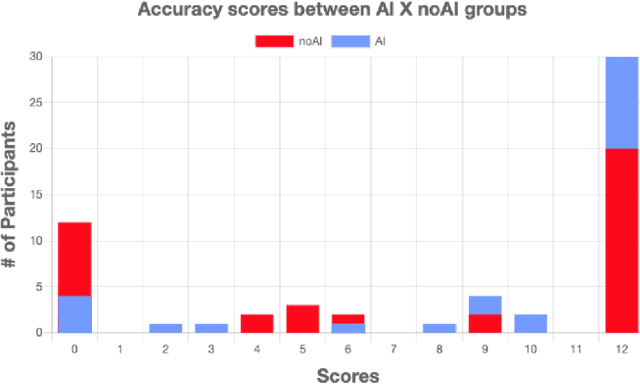
Abstract:Game development is a complex task involving multiple disciplines and technologies. Developers and researchers alike have suggested that AI-driven game design assistants may improve developer workflow. We present a recommender system for assisting humans in game design as well as a rigorous human subjects study to validate it. The AI-driven game design assistance system suggests game mechanics to designers based on characteristics of the game being developed. We believe this method can bring creative insights and increase users' productivity. We conducted quantitative studies that showed the recommender system increases users' levels of accuracy and computational affect, and decreases their levels of workload.
 Add to Chrome
Add to Chrome Add to Firefox
Add to Firefox Add to Edge
Add to Edge